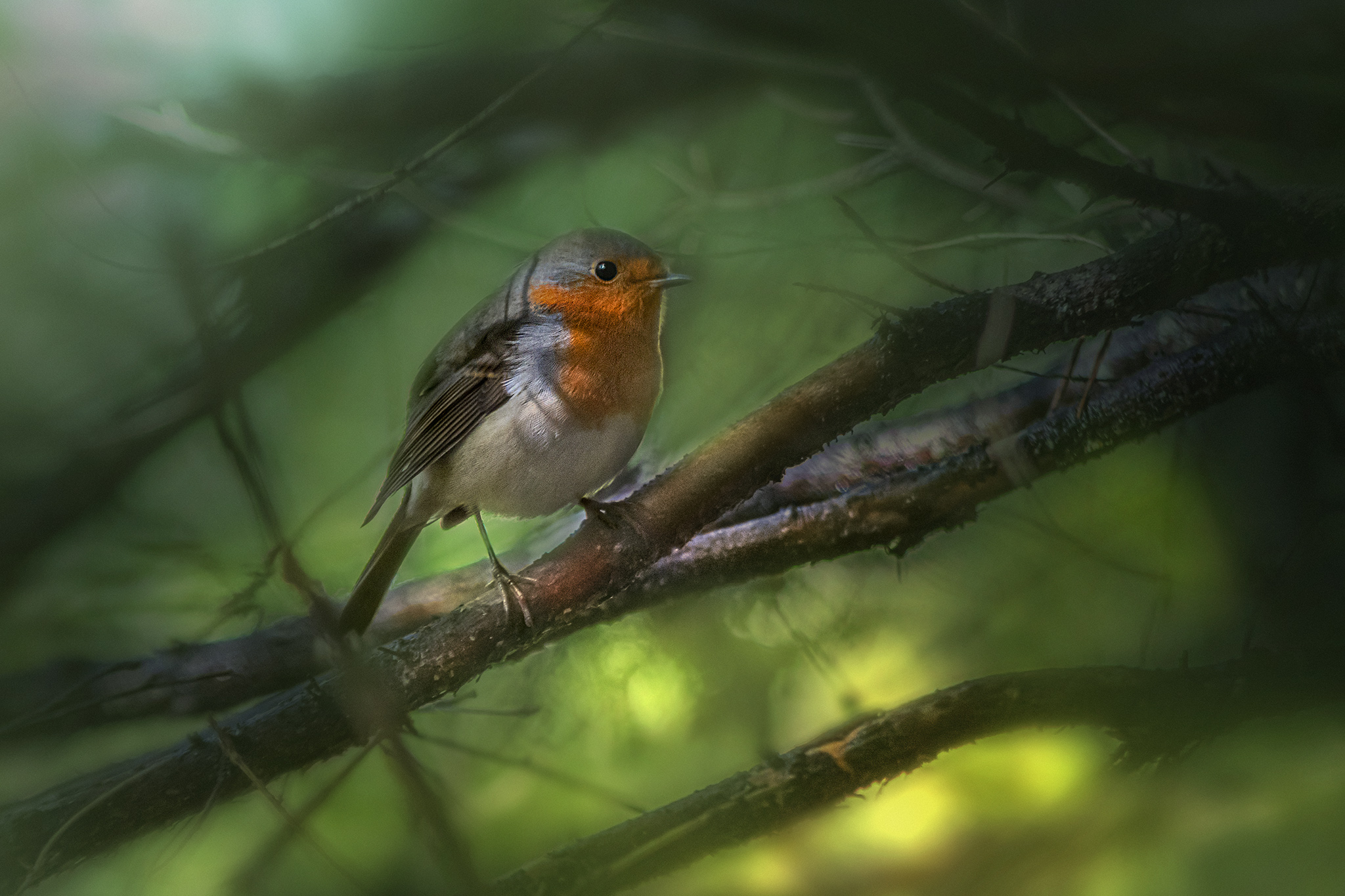
The European Robin (Erithacus rubecula) is a small passerine bird belonging to the family Muscicapidae. It is one of the most recognizable and beloved birds in Europe, known for its distinctive appearance, melodic song, and bold behavior.
Here are some key characteristics and features of the European Robin:
- Appearance: European Robins are characterized by their compact build, round bodies, and vibrant plumage. They have a bright orange-red breast, throat, and face, which contrast sharply with their brownish-gray upperparts. Both males and females exhibit this plumage, although males typically have brighter colors. Juveniles have speckled brown plumage and lack the red breast.
- Habitat: European Robins are versatile birds that inhabit a wide range of habitats, including woodlands, forests, parks, gardens, and urban areas. They are commonly found in areas with dense vegetation and suitable nesting sites, such as shrubs, hedges, and tree hollows.
- Behavior: European Robins are known for their territorial behavior, especially during the breeding season. Males establish and defend territories through singing and displays, often engaging in aggressive encounters with intruders. They are also known for their boldness around humans, often approaching closely in search of food.
- Diet: European Robins are primarily insectivorous, feeding on a variety of insects, spiders, and other small invertebrates. They also consume berries, fruits, and seeds, particularly in the winter when insect prey is scarce.
- Breeding: European Robins typically breed from March to August. They construct cup-shaped nests made of twigs, leaves, and moss, lined with softer materials such as grass and feathers. Nests are often hidden in vegetation or tucked into crevices for protection. Females lay a clutch of eggs, which are incubated primarily by the female, although males may also assist in feeding the chicks.
- Song: European Robins are known for their beautiful and melodious song, which consists of a series of clear, flute-like notes. Their song is often heard throughout the year, but it becomes more prominent during the breeding season as males advertise their territories and attract mates.
European Robins hold a special place in European folklore and culture, often symbolizing hope, renewal, and the arrival of spring. Despite their widespread distribution and relatively stable populations, they still face threats from habitat loss, predation, and harsh winters. Conservation efforts focused on preserving and enhancing their habitats are essential for ensuring the continued survival of this iconic bird species.
Subscribe to the newsletter:
